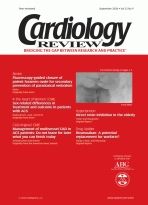Publication
Article
Cardiology Review® Online
A new alliance in a changing world: AACIO partners with Cardiology Review
“The old order changeth, yielding place to new.” The new alliance between the American Association of Cardiologists of Indian Origin (AAACIO) and Cardiology Review ushers in an era of collaboration that bears credence to this timeless composition by Alfred Lord Tennyson. The AACIO was founded in 1986 by Drs Navin Nanda and Roshan Lal. Since its inception, the organization has been molded considerably and it continues to evolve and grow, but its goal of bringing all cardiologists of Indian origin under one umbrella to provide a central forum to discuss everything from challenges faced in practicing cardiology to the latest cardiovascular research has not changed.
The rate of cardiovascular disease in Asian Indians is unacceptably high, with the disease occurring 10 years earlier in this population than in any other.1 Diabetes, a cardiovascular risk equivalent, occurs at rates 50% to 300% higher in Asian Indians than in other populations.2 The AACIO is committed to combating this rising epidemic by working closely with local, national, and international cardiovascular societies and organizations to increase awareness through educational, social, and scientific activities. The objective is to prevent and manage cardiovascular disease in Asian Indians and other ethnic minorities, who are often overlooked or require special consideration. For instance, because South Asians develop metabolic abnormalities at a lower body mass index (BMI) and waist circumference than other populations, the prevalence of metabolic syndrome, which is considered a precursor to diabetes and coronary artery disease, is underestimated by 25% to 50% in this population when using conventional criteria.1 As a result, the World Health Organization has decreased the obesity cutoff in South Asians from a BMI greater than 30 kg/m2 to a BMI greater than 25 kg/m.2,3 In addition, it appears that the South Asian-specific waist circumference recommended by the International Diabetes Federation is preferable to other recommendations.1 Fortunately, a wide spectrum of intervention can be offered to today’s patients, but the first and most crucial step is identifying risk factors. Once these are identified, risk-factor modification can be offered, which may include encouraging a healthier lifestyle, pharmacotherapy, and in more severe cases, treatment with stents and devices such as implantable cardioverter defibrillators.
The cardiology world is constantly evolving as new interventions and scientific discoveries are being made. The collaboration between the AACIO and Cardiology Review provides a unique platform to highlight these discoveries and to increase awareness of cardiovascular disease in Asian Indians and other populations. It is by joining hands today that we take one step closer to accomplishing our unified mission of eradicating cardiovascular disease worldwide tomorrow.






